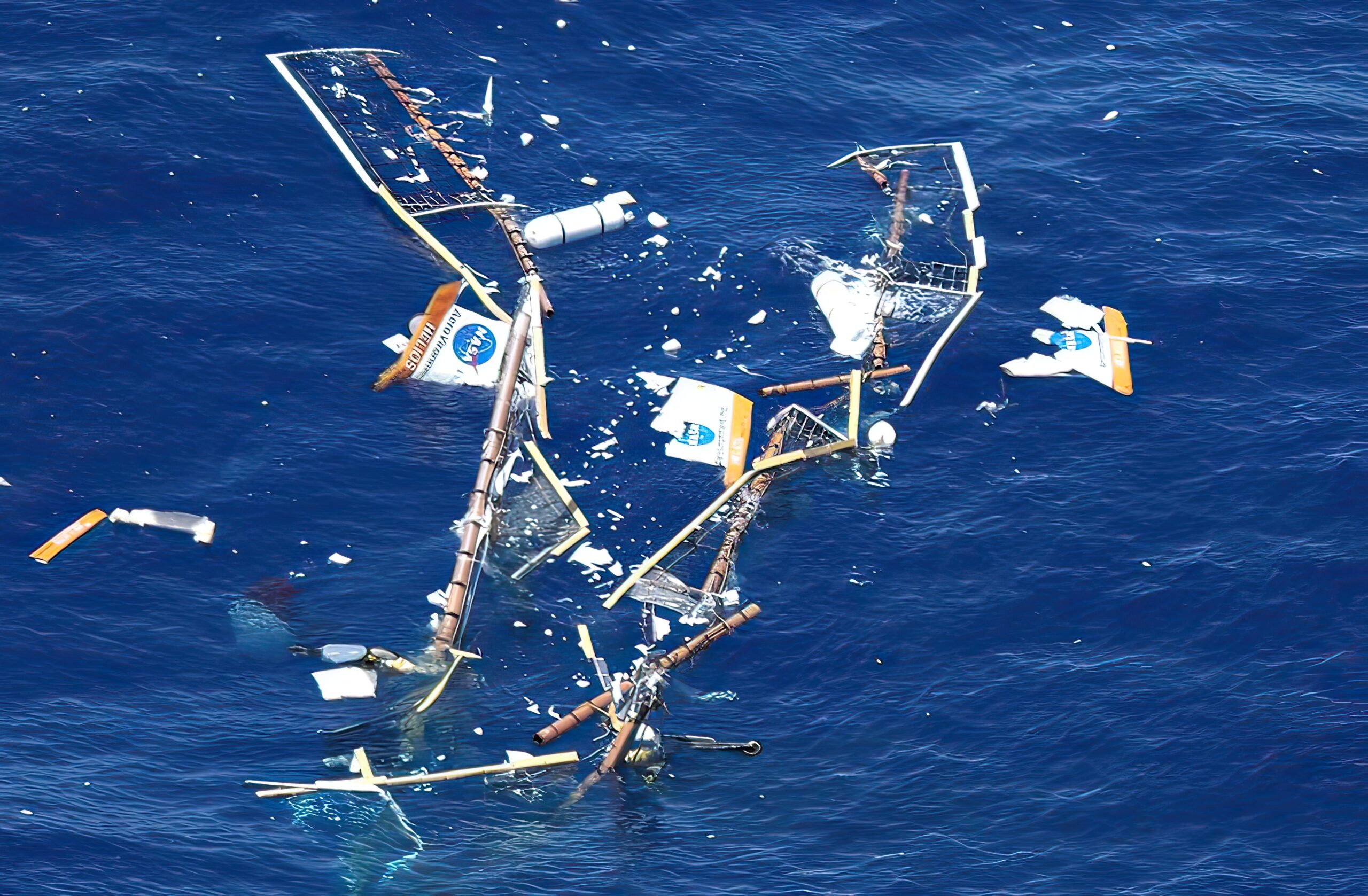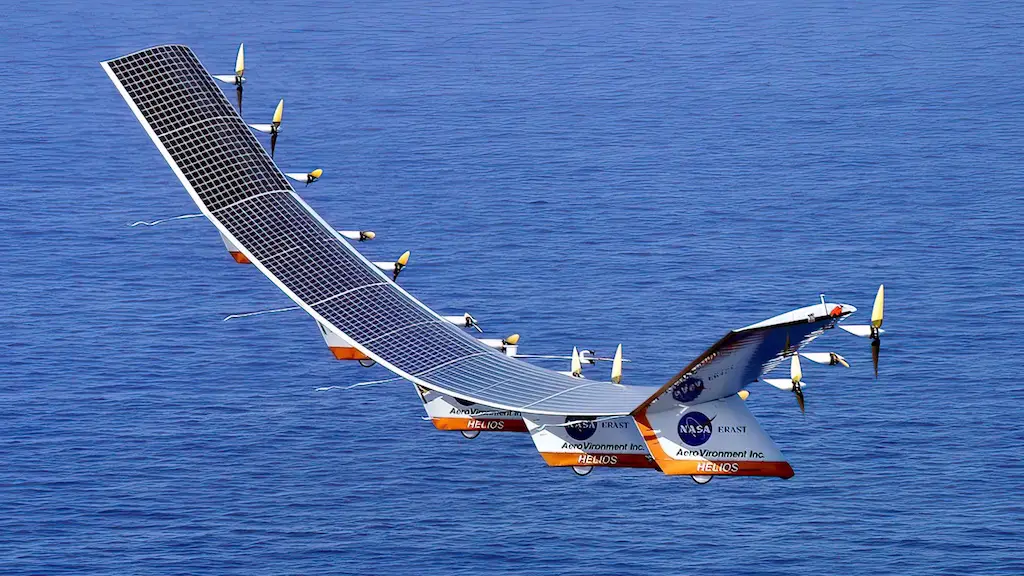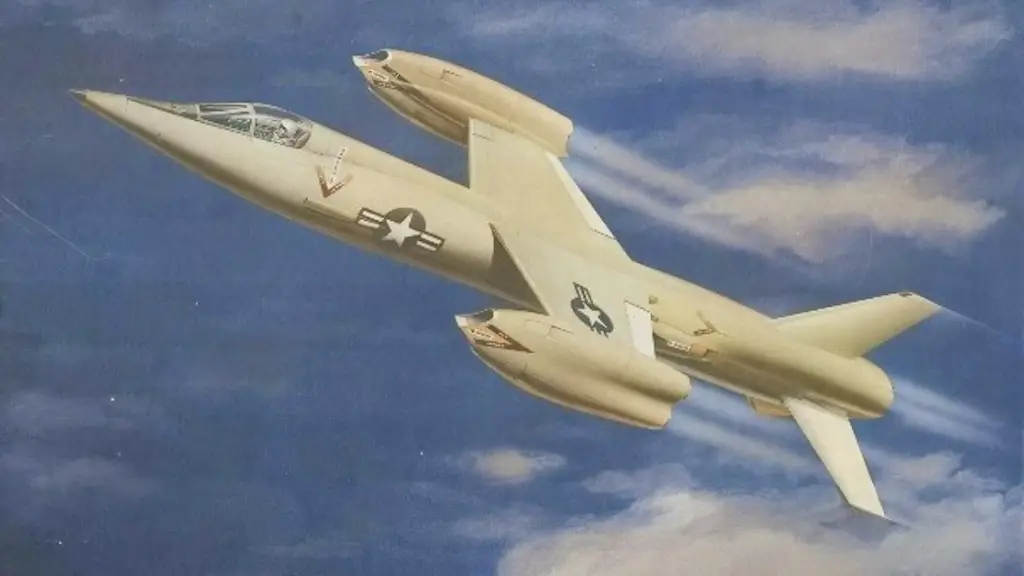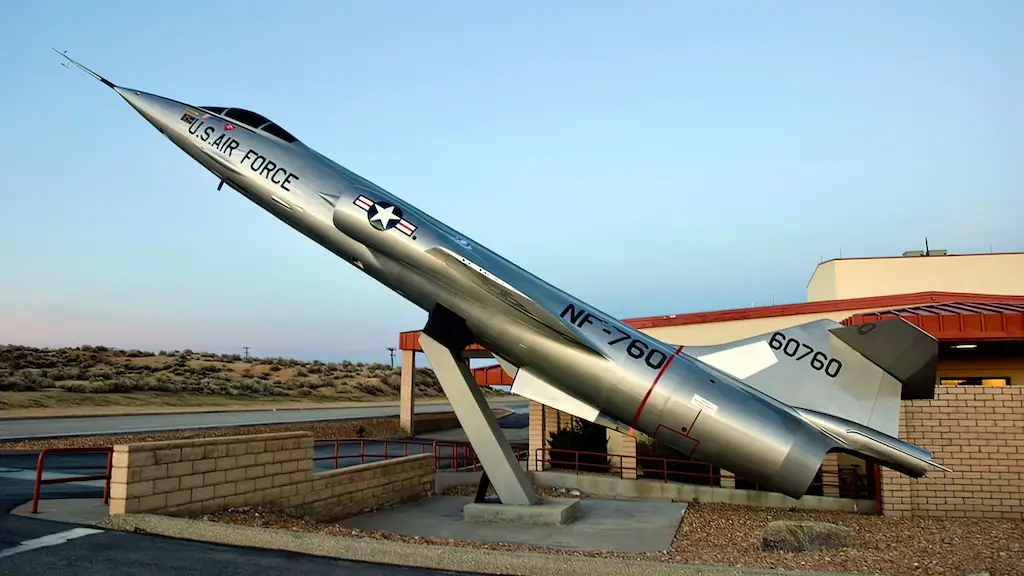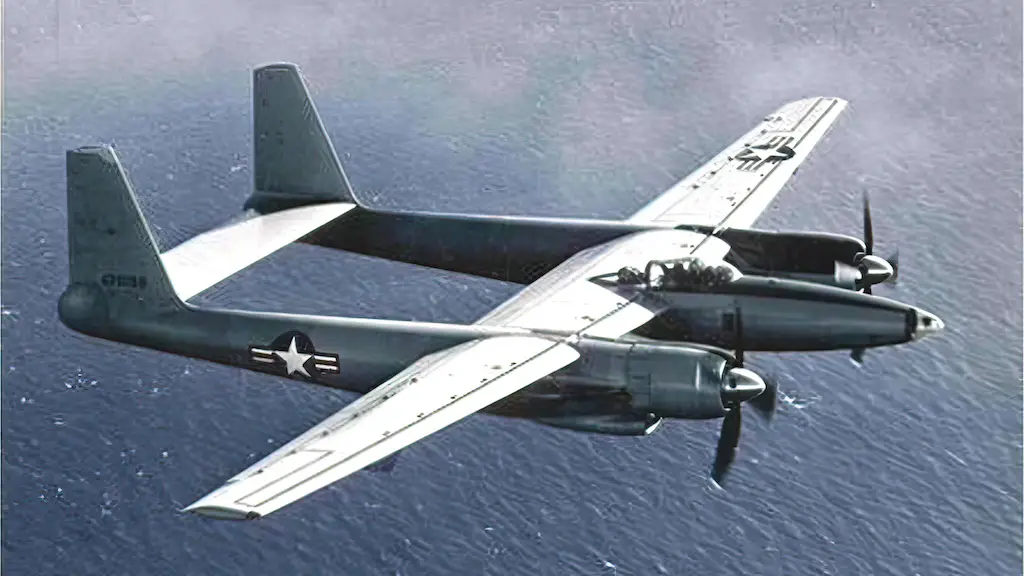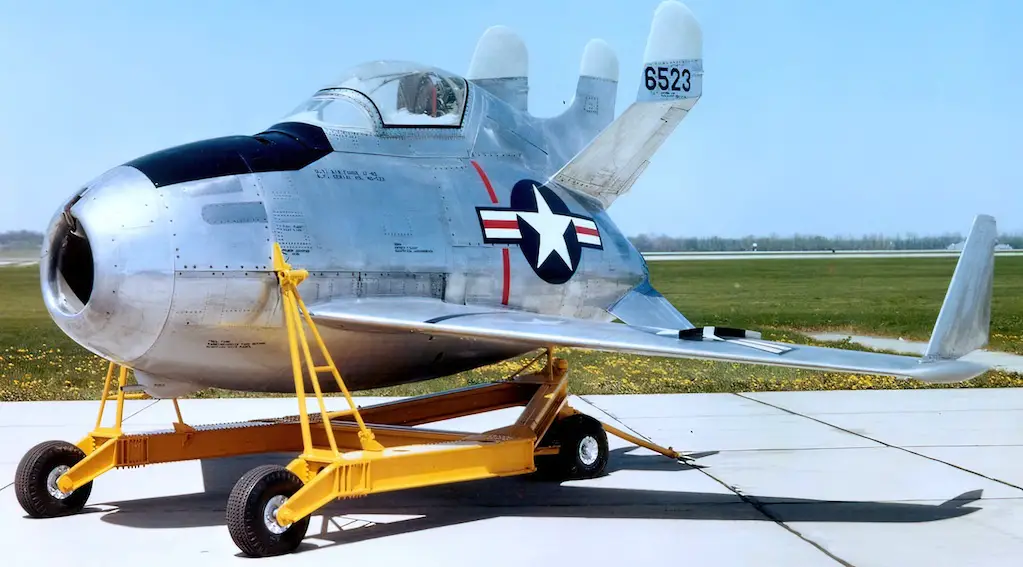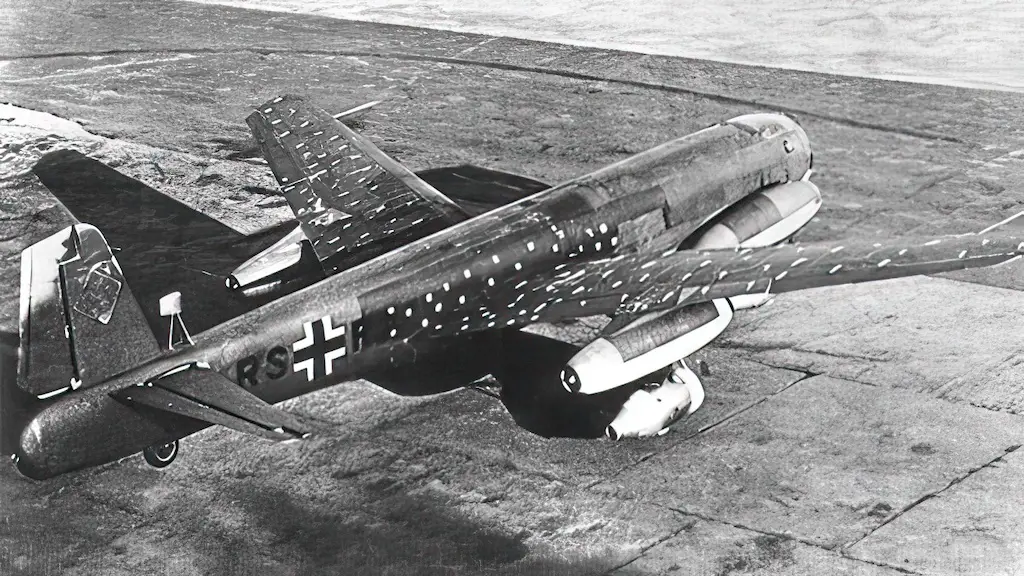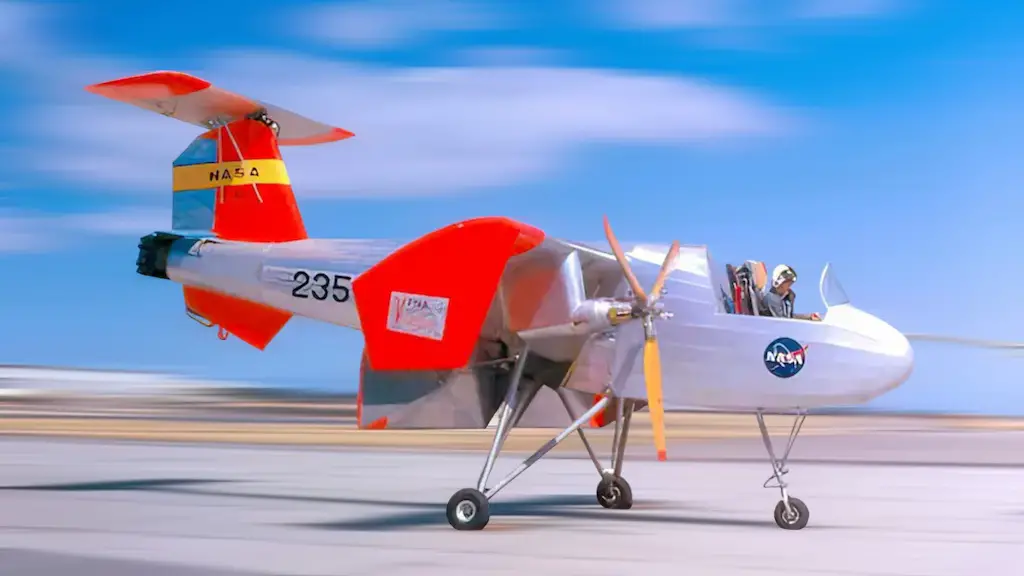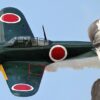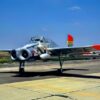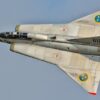The most reliable and proven way of extending an aircraft’s range several-fold is mid-air refueling. But there’s another very promising one: getting the energy from the sunlight as you fly. AeroVironment Helios Prototype unmanned aircraft was built specifically to prove the viability of this audacious concept. It would rise into the stratosphere on wings covered with hundreds of square feet of solar panels and bathe in the sunlight for a couple of days on end, drawing the energy from nuclear fusion millions of miles away.
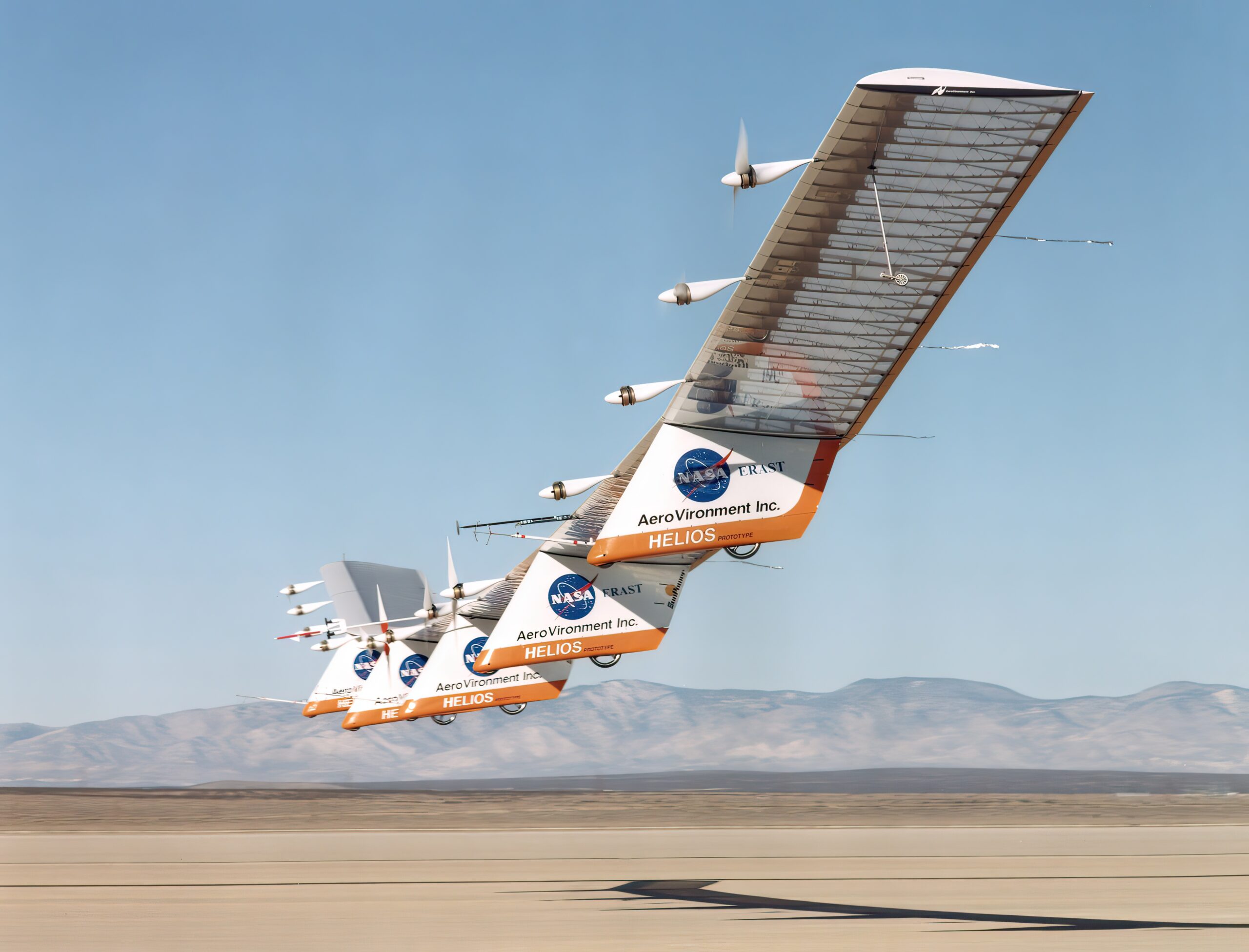
In Pathfinder’s footsteps
The Helios was not built from scratch. It was the final iteration in a series of solar-powered ultralight unmanned aerial vehicles developed by the AeroVironment company under NASA’s Environmental Research Aircraft and Sensor Technology (ERAST) program.
ERAST aimed to develop technology for building long-endurance, high-altitude aircraft that could be used as atmospheric satellites, performing research and serving as communication platforms. The first of these vehicles was NASA Pathfinder, which dated to the early 1980s. In 1998, it was developed into Pathfinder Plus and then into Centurion. Centurion, in its turn, became the basis for Helios, the fourth vehicle in the series, and also the largest one.
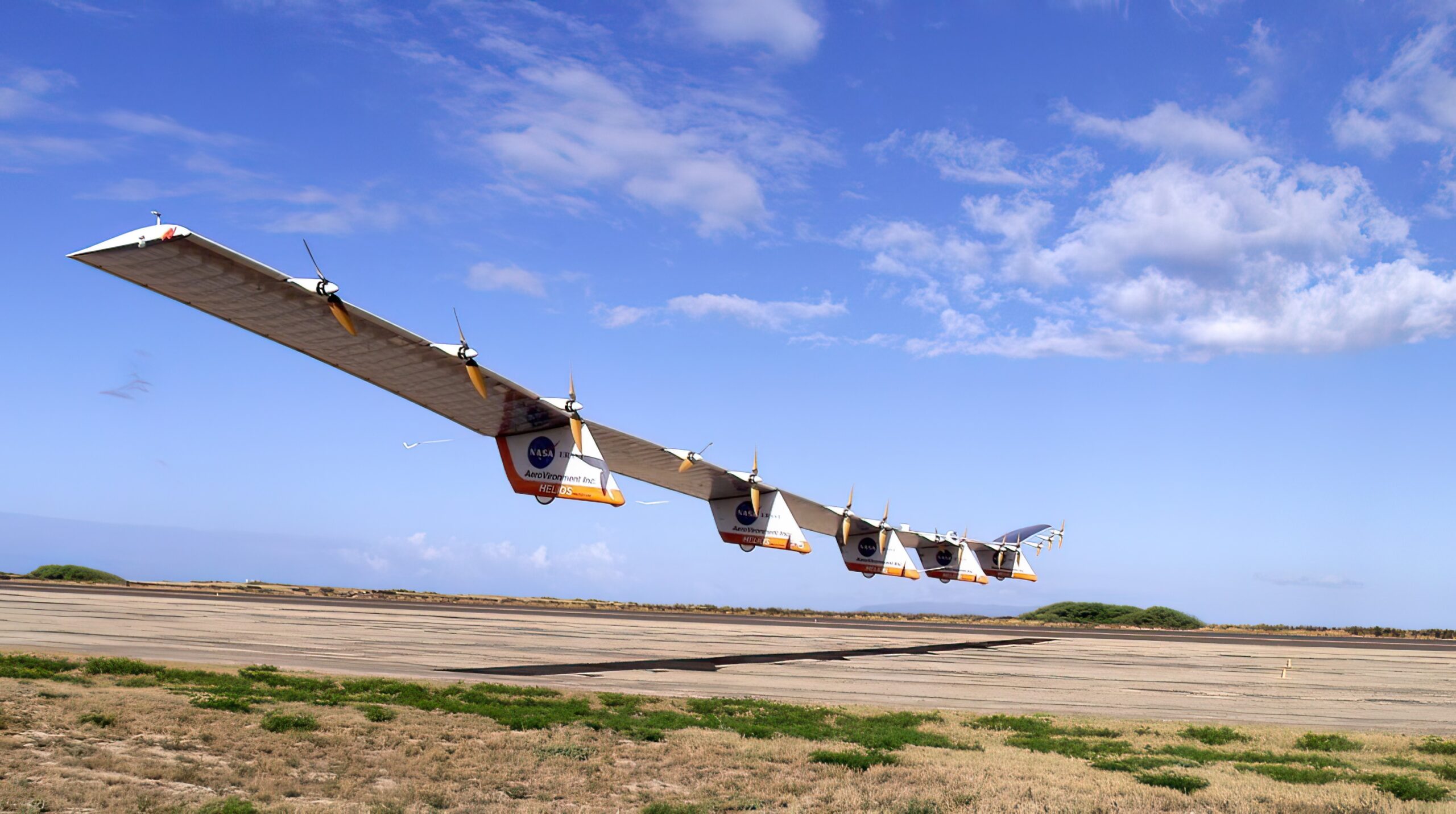
Outspanning the Jumbo Jet
The Helios Prototype had a wingspan of 247 ft—that’s more than that of a Boeing 747—and a chord of eight feet. This huge wing area, twice as large as that of the Pathfinder Plus, was covered with solar arrays composed of more than 62,000 solar cells generating electricity to drive the vehicle’s fourteen motors. Being a very fragile design made mostly of composite materials and plastic, Helios was not intended for flying fast: it had a top speed of mere 20 mph.
In fact, the main objectives of the prototype were sustained flight at altitudes near 100,000 ft and non-stop flight of at least 24 hours, with at least fourteen hours of that time above 50,000 feet. NASA and AeroVironment first flew Helios in a configuration optimized for the first task, designated the HP01, and then reconfigured it into the HP03 variant to fulfill the second objective.
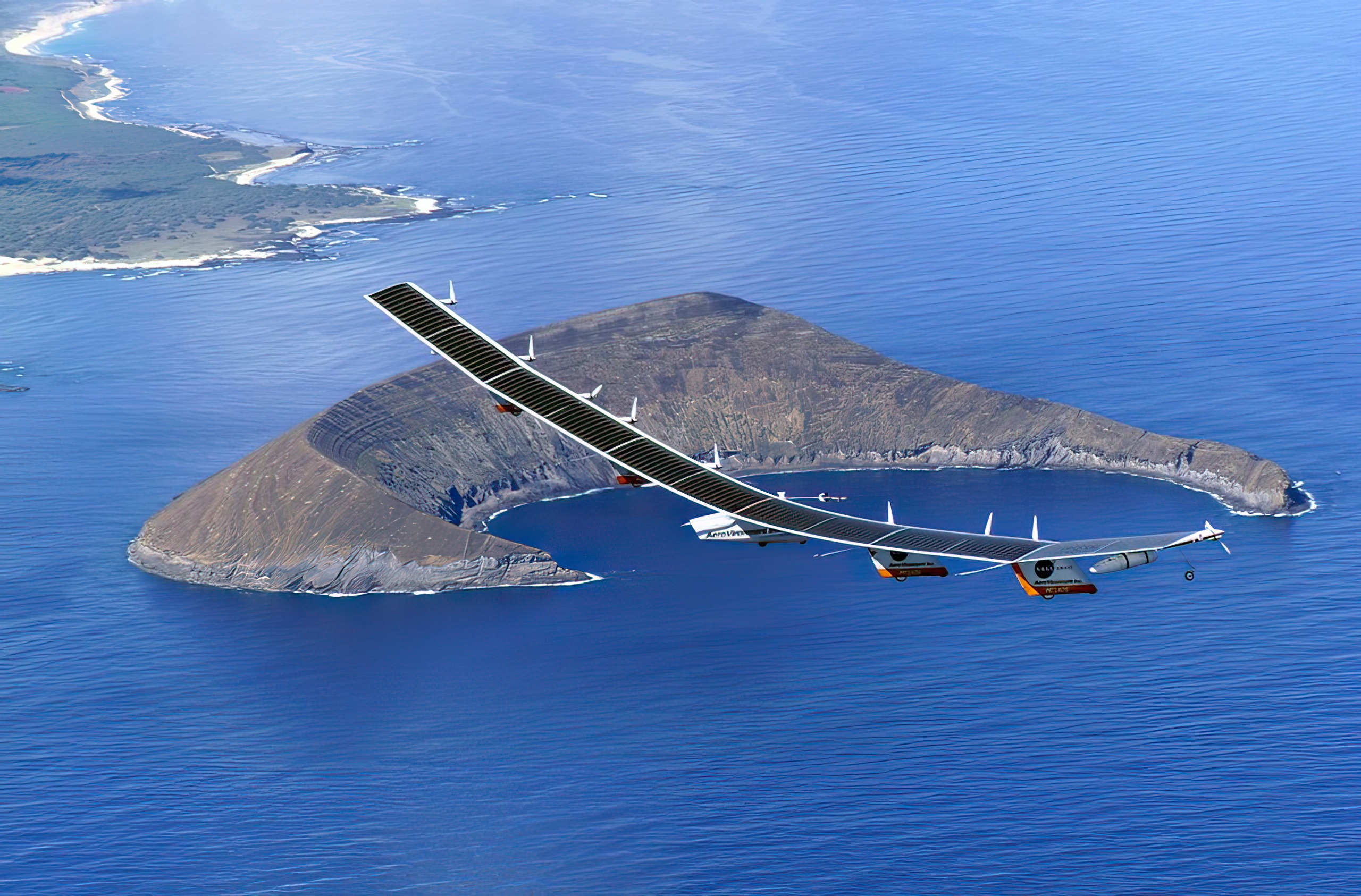
Flying high
The Helios Prototype first flew in September 1999 at NASA’s Dryden research facility, demonstrating the ability to carry payloads of up to 626 lb. It was then further upgraded and in August 2001, the HP01 variant optimized for high-altitude flights and powered by solar cells and lithium battery packs rose to 96,863 ft, breaking the previous world altitude record for sustained horizontal flight by a winged aircraft by 11,000 ft. It flew above 96,000 ft for over 40 minutes. The first objective was achieved.
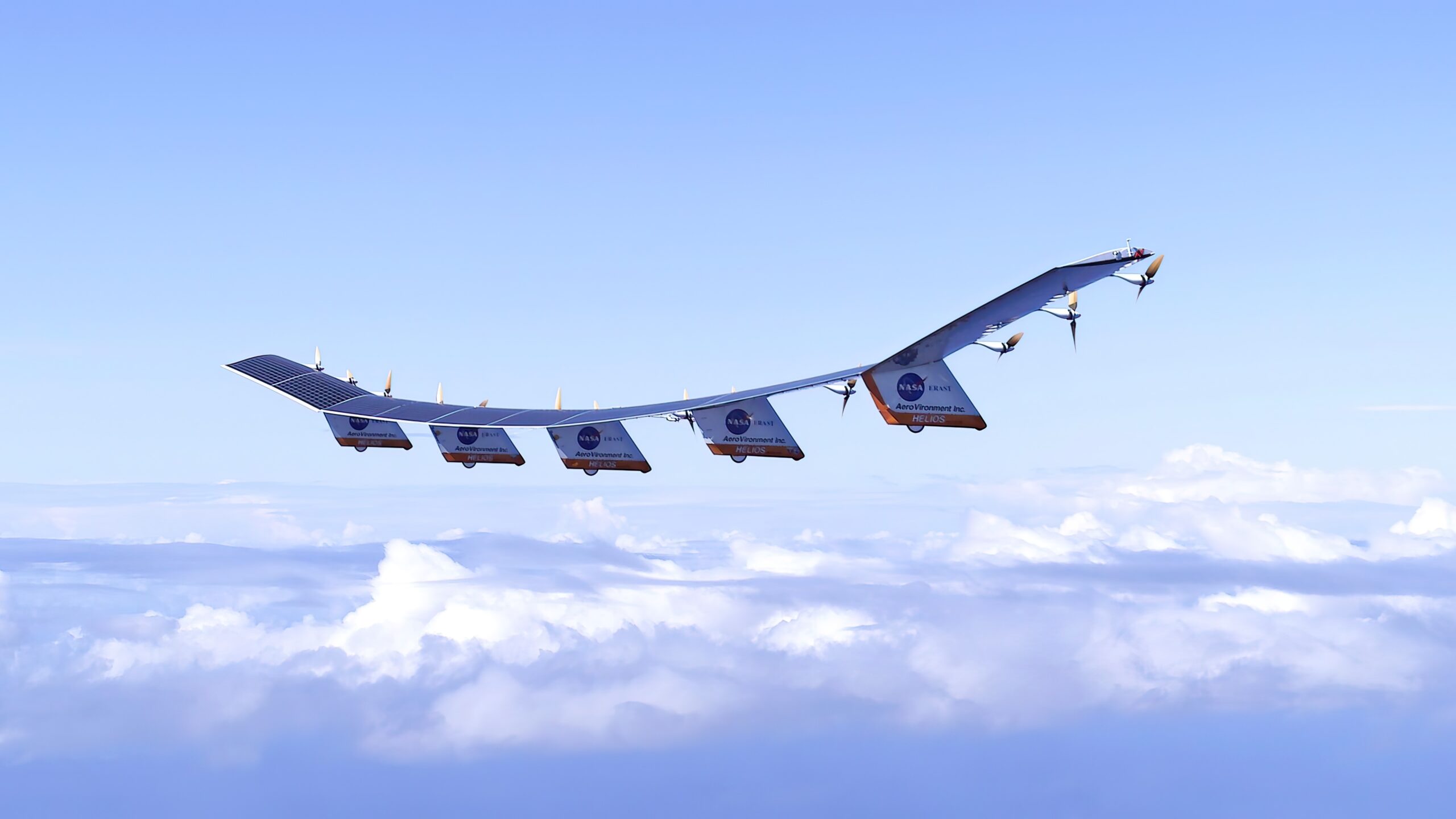
Deadly turbulence
The long-endurance HP03 variant had hydrogen-air fuel cells in addition to solar cells and batteries to keep it going at night. It also had just ten motors instead of fourteen. Alas, just as the research team was preparing to conduct the long-endurance test, Helios suffered a mishap. On June 26, 2003, during a routine flight, it encountered atmospheric turbulence, which caused excessive upward bowing of both wingtips and pitch oscillations.
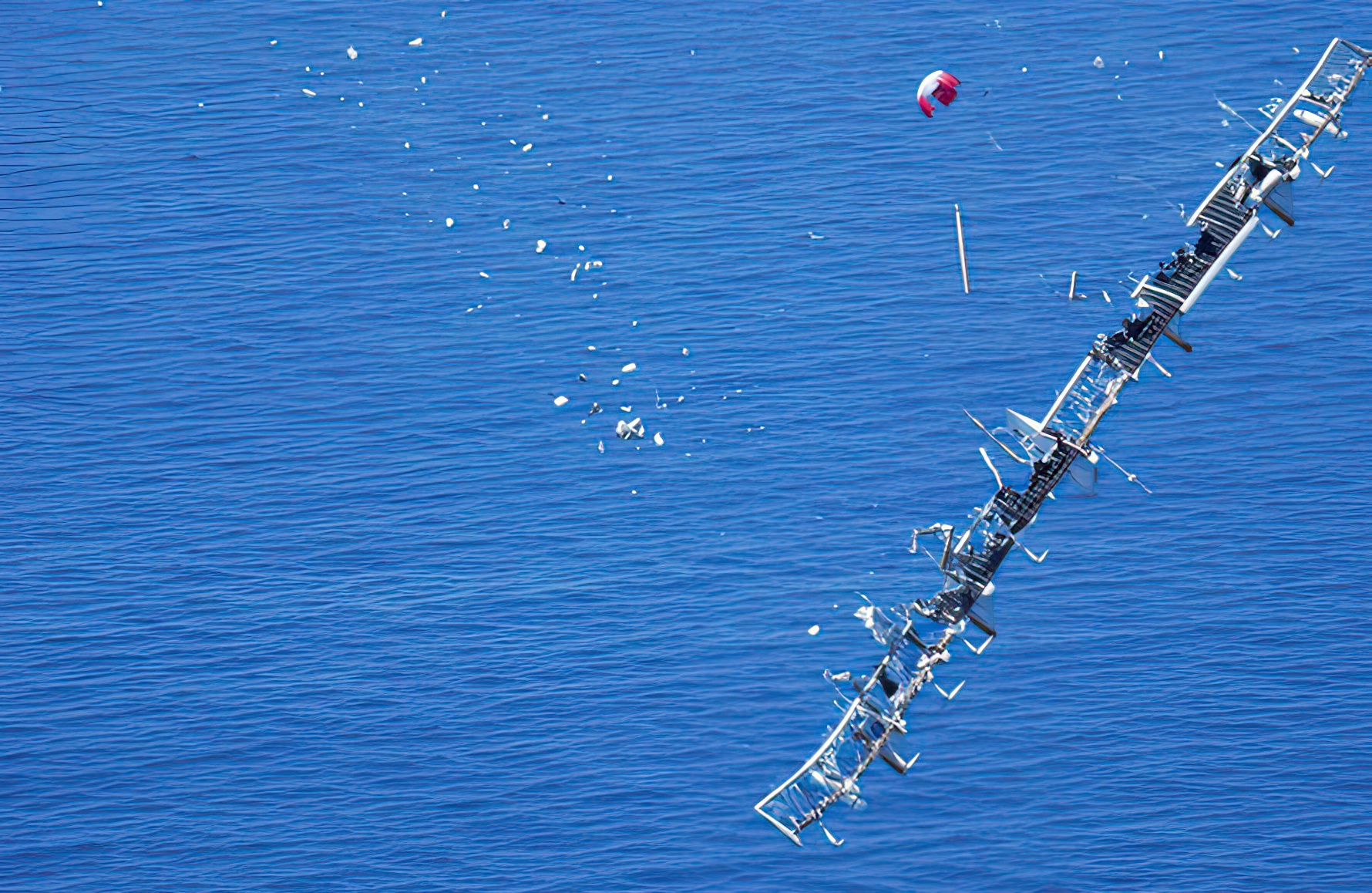
The aircraft became unstable, broke apart in the air and fell into the Pacific Ocean near Hawaii. That was the end of Helios Prototype, but not of the solar-powered aircraft concept. In 2016, an even more advanced vehicle, the Solar Impulse 2, completed the first circumnavigation of the Earth by a piloted solar-powered aircraft.
